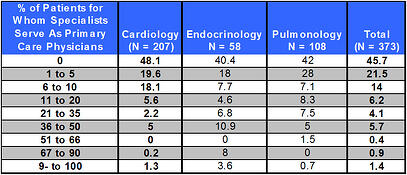It is inevitable that whenever CMS issues proposed rules on new or expanded programming – in this case the recently proposed mandatory Medicare cardiac bundles set to begin in 2017 – comments, criticisms, suggestions and recommendations on the program start to surface. “Pushback,” if you will.
It is part of the constituency advocacy role of organizations like the American Hospital Association, The Federation of American Hospitals and American College of Cardiology to comment, often in considerable detail, on proposed rules that govern hospital and physician reimbursement from Medicare. Good for them! It is also the role of CMS to both solicit and accept constructive criticism and useful comments from the industry to fine-tune potential regulations within the context of their overall goals and objectives. In this case, that goal is to convert 50 percent fee-for-service reimbursement to fee-for-value by 2018 – thus, the push to bundling.
Over the course of my career, I have seen my fair share of federal regulations changed or materially altered by constructive comments and/or lobbying from the industry. I have even seen regulatory implementation dates pushed back to allow for more hospital and physician preparation time. It does happen, and when appropriate, it should happen. However, no amount of fine-tuning, programmatic changes, clarifications or deadline relenting will change the basic fact that CMS is moving inexorably away from fee-for-service and to payment for value. Payment for value through Medicare mandatory cardiac bundles is going to happen – it is only a question of when and not if. Hospitals best be prepared.
Comments and Criticism: “Slow Down!”
CMS’s October 3 deadline for comments on the proposed mandatory Medicare cardiac bundle was greeted with hundreds of comments – many of a highly technical nature that will get worked out (or ignored) in the final regulations. It would seem that the majority of the commenters prefaced their technical comments with the overriding concern that CMS was going too fast in pushing bundles given that the 248-page evaluation of the Bundled Payment for Care Improvement (BPCI) program published in August produced a “mixed-bag” of results – especially regarding the 30-participating hospital cardiovascular surgery episodes. To paraphrase the commenters, “how can you continue this pace of radical change in reimbursement when you haven’t justified it in terms of enhanced clinical quality and lower costs, which was your goal in the first place?” It’s a valid point, but one that will, I am afraid, be downplayed in CMS’s quest for their “50 percent by 2018” goal. We say again: payment for value through Medicare mandatory cardiac bundles is going to happen; it is only a question of when, not if. The details may change, but the goal remains.
In particular, the comments proposed by the Federation of American Hospitals were very detailed and interesting to read. They did an excellent job of presenting their case based upon their unique perspective from their constituent base (investor-owned or managed hospitals). Just a few of their comments and recommendations included:
- Need for hospitals to access historical claims data in a timely manner to allow for appropriate statistical analyses to manage financial risk
- Moving the program start date from July 2017 to 2018
- Reducing the 90-day post-discharge coverage to 30-days
- Attributing inpatient-to-inpatient transfer episodes to the receiving hospital (a big issue with AMI since approximately 20% are transferred from receiving hospital to treating hospital)
- Need for standardized risk-adjustment and risk-stratification for patient-specific clinical indicators or differentiation within a specific MS-DRG
- Use of Metropolitan Statistical Areas not census divisions for establishment of regional pricing
- Exemption for low-volume hospitals and Medicare-heavy hospitals
- Need for all-encompassing waivers for all bundling programs to protect against legal and regulatory risk
- Recommended changes to the quality framework
- And many others.
Preparing for Inevitability
These are all reasonable comments and worthy of consideration by CMS. They received a lot of technical comments from a lot of people that I am sure are of worthy of consideration. However, we say for the third time: payment for value through Medicare mandatory cardiac bundles is going to happen – it is only a question of when, not if. Yes, the final regulations could be changed to reflect these (or many other) comments and recommendations. The program implementation could even be put off until 2018; such a move isn’t unprecedented. But this does not change the basic fact that bundling is here to stay and that hospitals need to be prepared. Remember, as goes Medicare, so inevitably goes the private payer sector.
To assist hospitals in preparing for mandatory Medicare bundled payment programs, CFA has published two articles in Diagnostic and Interventional Cardiology (DAIC). The first part focused on baseline capabilities requirements, and the second on Methodology and Approach (coming soon in the same journal). This material is a good place to start in preparing for inevitable bundled pricing for cardiovascular services.
As always, CFA invites your comments, suggestions and questions. For additional information, including blog posts specific to bundled pricing and Medicare’s new cardiac bundle, please refer to Bundled Payment for Cardiovascular ProceduresBundled Payment for Cardiovascular Procedures



